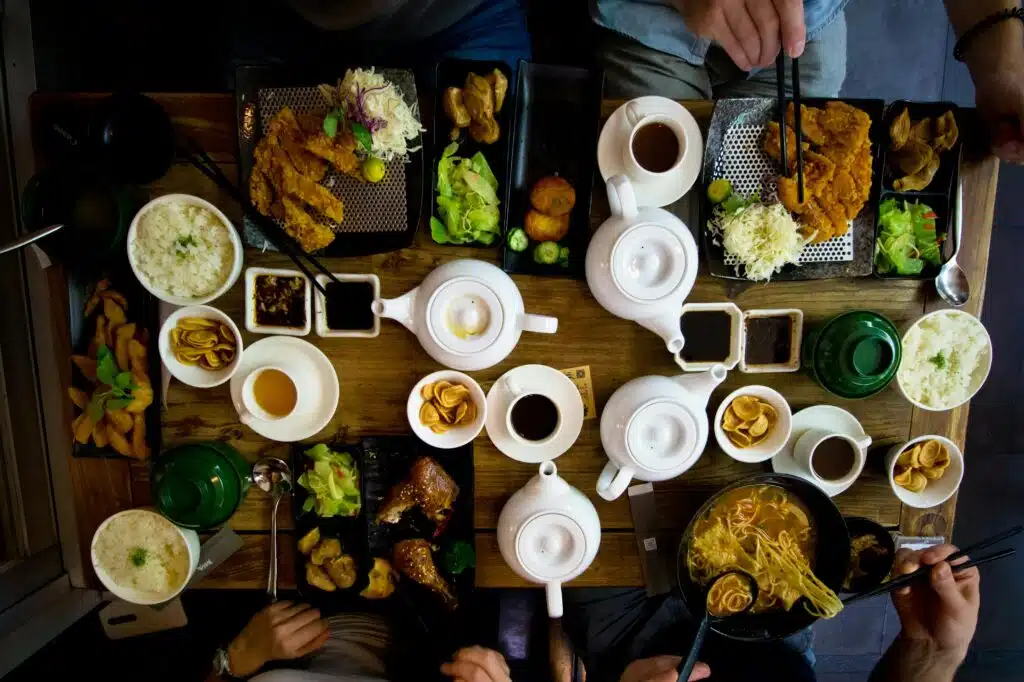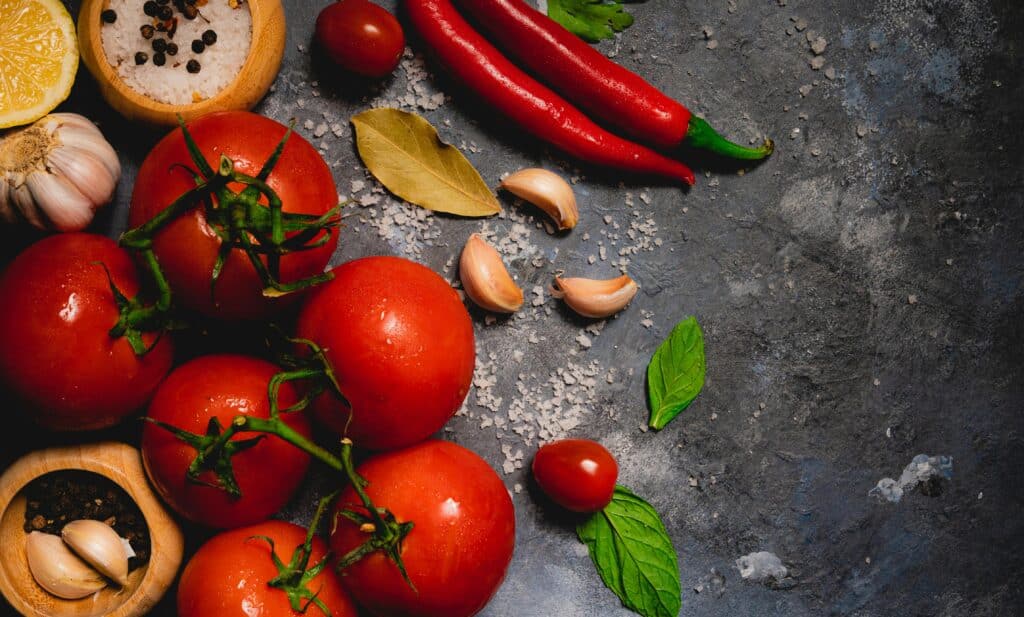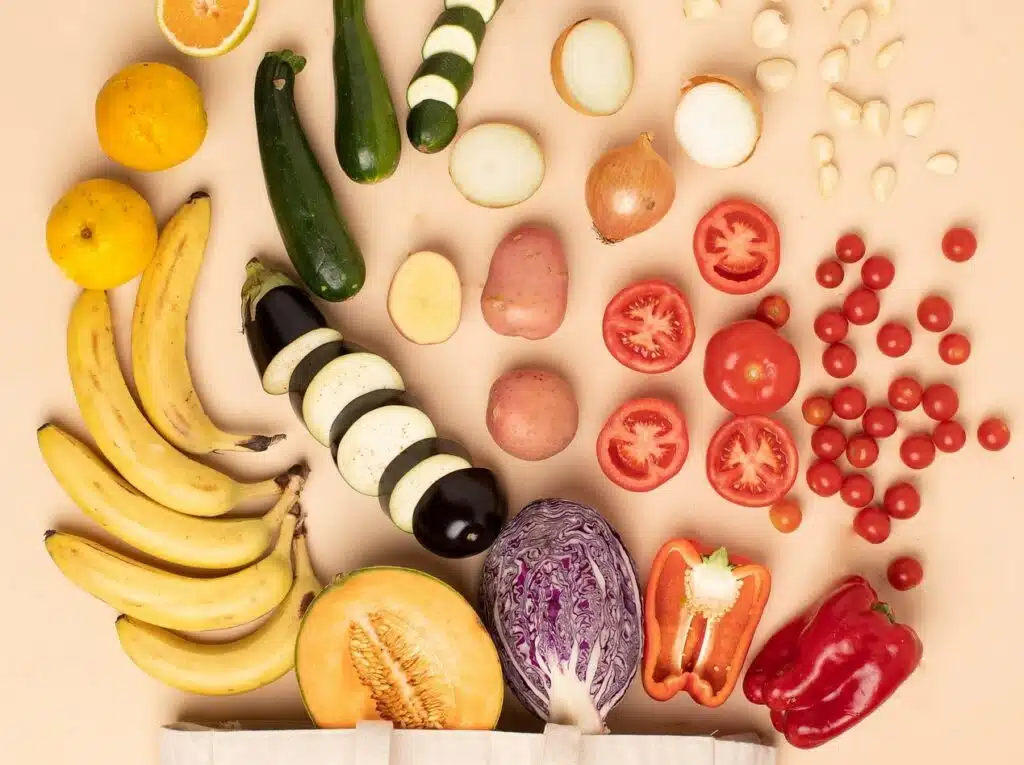Discover the fascinating Nordic cuisine: from traditional ingredients to modern “New Nordic Cuisine”. Find out why fish plays an important role and how healthy the Nordic diet really is.
What is Nordic cuisine?
Which countries are part of Nordic cuisine?
Nordic cuisine, also known as Scandinavian cuisine, primarily includes the countries of the Scandinavian Peninsula: Sweden, Norway, Finland, and Denmark. Iceland and the Faroe Islands are often included as well.

Key Ingredients in Nordic Cooking
Nordic cuisine focuses on regional and seasonal products. It emphasizes using what grows or lives in the local environment. Key ingredients include:
- Berries such as blueberries, blackberries, currants, cloudberries, or lingonberries
- Herbs like dill or parsley
- Fish such as pike, perch, or salmon
- Various whole grains like rye, oats, or barley
- Meats such as game or lamb
- Vegetables like local cabbage varieties or root vegetables
- Mushrooms like chanterelles or porcini
- Dairy products such as skyr, yogurt, or cheese
Why is fish so important in Nordic Cooking?
Nordic diets recommend consuming fish at least two to three times per week, ideally fatty varieties like salmon, herring, or mackerel. These fish are rich in long-chain omega-3 fatty acids, which support heart health, reduce inflammation, and may even boost brain function.
The prominent role of fish is not just nutritional but also historical. Along the Scandinavian coasts, fish was for centuries the main source of animal protein, especially during long, harsh winters when farming was nearly impossible. Traditional preservation methods like smoking, drying, salting, curing, and fermenting ensured a winter supply. These techniques led to unique delicacies: air-dried stockfish (“hjell” in Norway), lutefisk, salted klippfisk, wood-smoked fish, or fermented herring. Such processing preserved nutrients and created distinct flavors that are still valued today.
The New Nordic Cuisine
What’s the idea behind “New Nordic Cuisine”?
The New Nordic Cuisine was born in 2004 with the “New Nordic Food Manifesto,” created by Claus Meyer, René Redzepi, and other top chefs in Copenhagen. At its core, it reimagines traditional, natural ingredients with a modern approach. The movement emphasizes clear, pure flavors and revives old techniques like fermenting, curing, and smoking to bring local foods back to life.
Dining is seen not as a standalone act, but as part of a holistic cultural experience: landscape, design, sustainability, and community are inseparable from food preparation and enjoyment. The aim is to support local producers, reduce environmental impact, and elevate high-quality food as a public cultural asset.
What’s the deal with ants in Nordic cuisine?
Ants might sound surprising, but they perfectly represent the creativity and experimentation behind New Nordic Cuisine. Some top chefs, most notably at the famed Noma restaurant in Copenhagen, use ants as a natural source of acidity, adding them to salads or fish dishes. The tiny insects taste unexpectedly fresh and lemony due to their formic acid. They’re not just a culinary statement but also a symbol of using what’s available in nature in a sustainable way.
Healthy Enjoyment: What Does Science Say?
Why is the Nordic diet considered healthy?
The Nordic diet is seen as beneficial due to its focus on local, whole foods: lots of berries, root vegetables, whole grains (especially rye and oats), omega-3-rich fish, legumes, and plant-based oils like rapeseed oil.
Although long-term studies are still limited, early research suggests positive effects: reduced cardiovascular disease risk, lower diabetes risk, and support for healthy blood pressure, thanks to the synergy of whole grains, vegetables, berries, and fish.
Are there similarities with the Mediterranean diet?
Both diets emphasize vegetables, fish, legumes, healthy oils (rapeseed in the north instead of olive), and whole grains. The New Nordic Diet can be seen as an adaptation of Mediterranean principles using Nordic ingredients. However, the Mediterranean diet is much better studied and remains the “gold standard” thanks to a wealth of controlled research.
Here’s an article comparing the Nordic and Mediterranean diets.
Nordic Cuisine – Recipes to Try at Home
Berry Muesli
100 g mixed berries
3 tbsp oats
1 tbsp nuts, flaxseed, or coconut flakes
150 ml milk (e.g. almond or oat)
Preparation:
Mix all ingredients in a bowl and stir well.
Köttbullar (Meatballs)
- 500 g ground meat (half beef, half pork)
- 1 small onion, finely chopped
- 1 egg
- 100 ml milk
- 3 tbsp breadcrumbs
- 1 jar lingonberry jam
- 400 g potatoes
- Salt, pepper, nutmeg
- Butter for frying
Preparation:
Soak breadcrumbs in milk and sauté onions in butter. Mix everything (meat, breadcrumbs, onions, egg, spices), form small balls, and fry in butter. Boil and mash potatoes, optionally adding butter. Serve together with lingonberries.
Salmon with Mustard-Dill Sauce
- 2 salmon fillets
- 4 carrots
- 1 fennel bulb
- Salt, pepper, lemon
- 1 tsp sugar
- 2 tbsp mustard
- 1 tsp honey
- 2 tbsp chopped dill
- 2 tbsp oil
Preperation:
Marinate salmon with lemon, salt, pepper, and sugar. Bake at 180°C for ~15 minutes. Slice carrots and fennel thinly and steam for ~10 minutes. Mix remaining ingredients for the sauce and serve together.
Pytt i Panna
- 400 g diced potatoes
- 200 g leftover meat (sausage, ham, ground meat)
- 1 chopped onion
- 2 eggs
- 2 beets
- Butter or oil, salt, pepper
Preperation:
Fry potatoes, onions, and meat until crispy. Separately fry the eggs. Dice beets. Season and serve.
Lohikeitto (Finnish Salmon Soup)
- 400 g salmon, diced
- 500 ml fish or vegetable broth
- 200 ml cream or milk
- 2–3 potatoes, diced
- 1 onion, chopped
- Dill, salt, pepper
- offeln, gewürfelt
- 1 Zwiebel, gehackt
- Dill, Salz, Pfeffer
Preperation:
Sauté onion in butter, add broth and potatoes and cook until tender. Add salmon and cream, simmer for 7–8 minutes. Season with dill, salt, and pepper.
Conclusion: The Nordic Cuisine
Nordic cuisine blends healthy eating with regional enjoyment, fresh fish, berries, root vegetables, and whole grains. Whether traditionally prepared or reinvented through New Nordic Cuisine, it stands for sustainability, clean flavors, and quality ingredients. Early studies also suggest it supports heart and metabolic health.
Be inspired and bring the taste of the north into your home and try one of the recipes today!

Asian Cuisine – Easy Recipes for Everyday Cooking
Asian cuisine – easy recipes to cook at home: Discover the diversity of Asi: from spicy Pad Thai and creamy Tikka Masala to hearty Laghman. Here you’ll find authentic recipes that are easy to recreate in your own kitchen.
Mediterranean Cuisine – Easy Recipes
Mediterranean cuisine captivates with fresh ingredients, aromatic herbs, and wholesome recipes. In this article, discover what makes the Mediterranean diet so unique, which essential ingredients define Mediterranean food, and how you can easily recreate authentic Mediterranean recipes at home. Perfect for anyone who wants to eat healthy and delicious!
Vegetarian diet scientifically proven
Vegetarian nutrition is booming. More and more people are adopting a meat-free diet. There are numerous reasons for this way of life and, above all, some advantages that have been proven by studies. In this article, we present you with current facts and interesting research results on the topic of vegetarianism.





